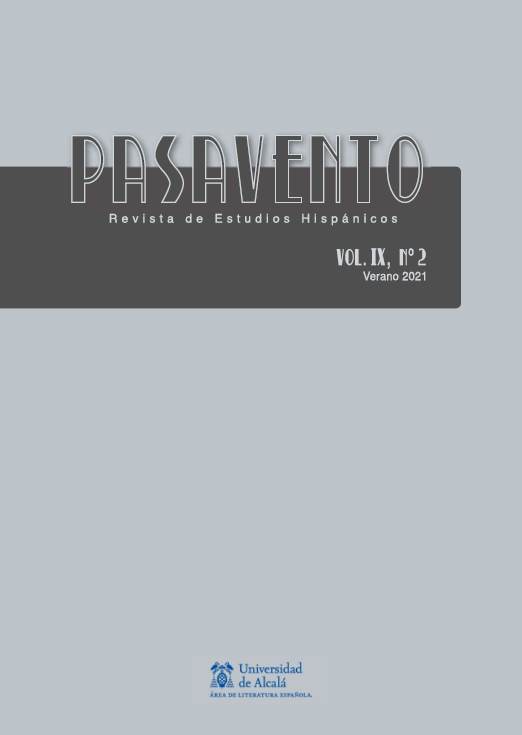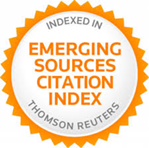Is the text a body and the body, a text? : Self-representation and feminist stances in Marta Sanz
DOI:
https://doi.org/10.37536/preh.2021.9.2.835Keywords:
authorship, gender studies, Spanish literature, feminism, autobiography, corporeality, subversive representations.Abstract
In this article we propose a review of the main strategies of self-representation of the Spanish author Marta Sanz, deployed both in her journalistic articles and essays and in her autobiographical novels. Sanz does not hesitate to defend an uncomfortable literature that provokes an agitation in her readers, a critical reaction, so that in her texts she claims a position in which to give visibility to some subjects that have been undervalued and excluded from the literary tradition, since they were considered intimate subjects and, therefore, not universal. The gaze with which Sanz drills reality is crossed by her feminist activism, as it is impossible for her not to claim a gender perspective. In her works we witness the exhibition of her self-portrait, a work for which she demands her position as a subject who chooses to show herself to others, in a way that subverts the male fetishist gaze. Not only will she succeed in affirming herself as a woman and author through her texts, but she will also maintain herself in a perpetual struggle against the stereotypical representation of violence against women in literature. The author manages to make the text, a body, a real corpus in which, as a mirror, pain, emotion, and obscenity are channeled. A discourse that is embodied to say with authenticity everything that historically has been silenced.
References
Blanco Medina, Eva (2018). “Marta Sanz, la escritora de lo desagradable”, ICON. El País. <https://elpais.com/elpais/2018/10/29/icon/1540835867_251761.html> (8 de septiembre de 2021).
Bonet, Paula (2016). “Marta Sanz: Sufrir no nos hace más fuerte, normalmente nos debilita”. <https://www.jotdown.es/2016/03/marta-sanz/> (5 de febrero de 2021).
Cixous, Hélène (1995). La risa de la medusa. Ensayos sobre la escritura. Barcelona: Anthropos.
Didier, Beatrice (1991). Le journal intime. París: Presses Universitaires de France.
Duras, Marguerite (1994). Escribir. Barcelona: Tusquets.
Kaiser Moro, Andrea (2018). “El derecho al aullido: corporalidad y lenguaje en Clavícula (Sanz, 2017)”, Feminismos/s, 31: 189-203. DOI: <http://dx.doi.org/10.14198/fem.2018.31.09>.
Morales, Clara (2017). “Marta Sanz: la queja es una forma de resistencia y rebeldía”, InfoLibre. <https://www.infolibre.es/noticias/los_diablos_azules/2017/04/07/marta_sanz_entrevista_clavicula_63522_1821.html> (9 de septiembre de 2021).
Mulvey, Laura (1988). Placer visual y cine narrativo. Valencia: Episteme.
Pérez Fontdevila, Aina y Meri Torras Francés (eds.) (2019). ¿Qué es una autora? Encrucijadas entre género y autoría. Barcelona: Icaria.
Pizarnik, Alejandra (2015). Prosa completa. Barcelona: Lumen.
Planté, Christine (2019). “La excepción y lo ordinario”, in ¿Qué es una autora? Encrucijadas entre género y autoría, ed. Aina Pérez Fontdevila y Meri Torras Francés. Barcelona: Icaria, 97-142.
Precioso, Jon-Romeo (2020). “Du corps visible au corps invisible: les maladies, blessures et cicatrices dans les romans de Marta Sanz”, Narraplus, 4: 89-115.
Ros Ferrer, Violeta (2018). “Divagaciones en torno a la imagen del agujero. La Transición en la escritura del cuerpo de Marta Sanz”, Olivar: Revista de Literatura y Cultura Españolas, 18 (27). DOI: <https://doi.org/10.24215/18524478e024>.
Russ, Joanna (2018). Cómo acabar con la escritura de las mujeres. Madrid: Barret y Dos Bigotes.
Sanz, Marta (2020). pequeñas mujeres rojas. Barcelona: Anagrama.
Sanz, Marta (2020). “Crueldad y amor”, El Salto. <https://www.elsaltodiario.com/literatura/opinion-marta-sanz-precariedad-escritura> (5 de febrero de 2021).
Sanz, Marta (2019). No tan incendiario. Cáceres: Periférica.
Sanz, Marta (coord.) (2019). Tsunami. Miradas feministas. Madrid: Sexto Piso.
Sanz, Marta (2018a). La lección de anatomía. Barcelona: Anagrama.
Sanz, Marta (2018b). Monstruas y centauras. Nuevos lenguajes del feminismo. Barcelona: Anagrama.
Sanz, Marta (2017). Clavícula. Barcelona: Anagrama.
Sigüenza, Carmen (2020). “Marta Sanz: Me da miedo cómo nos roban las palabras”, Efeminista. <https://www.efeminista.com/marta-sanz-pequenas-mujeres-rojas/> (11 de septiembre de 2021).
Somolinos Molina, Cristina (2018). “Mujeres, cuerpos y trabajos en la narrativa de Marta Sanz”, Olivar: Revista de Literatura y Cultura Españolas, 27. DOI: <https://doi.org/10.24215/18524478e025>.
Vara Ferrero, Natalia (2018). “Reformulando el sujeto, los géneros literarios y el compromiso con la historia: la escritura del yo en la obra de Marta Sanz”, Olivar: Revista de Literatura y Cultura Españolas, 27. DOI: <https://doi.org/10.24215/18524478e023>.
Zafra, Remedios (2017). El entusiasmo. Precariedad y trabajo creativo en la era digital. Barcelona: Anagrama.
Downloads
Published
How to Cite
Issue
Section
License
Copyright (c) 2021 Pasavento. Revista de Estudios Hispánicos

This work is licensed under a Creative Commons Attribution 4.0 International License.








